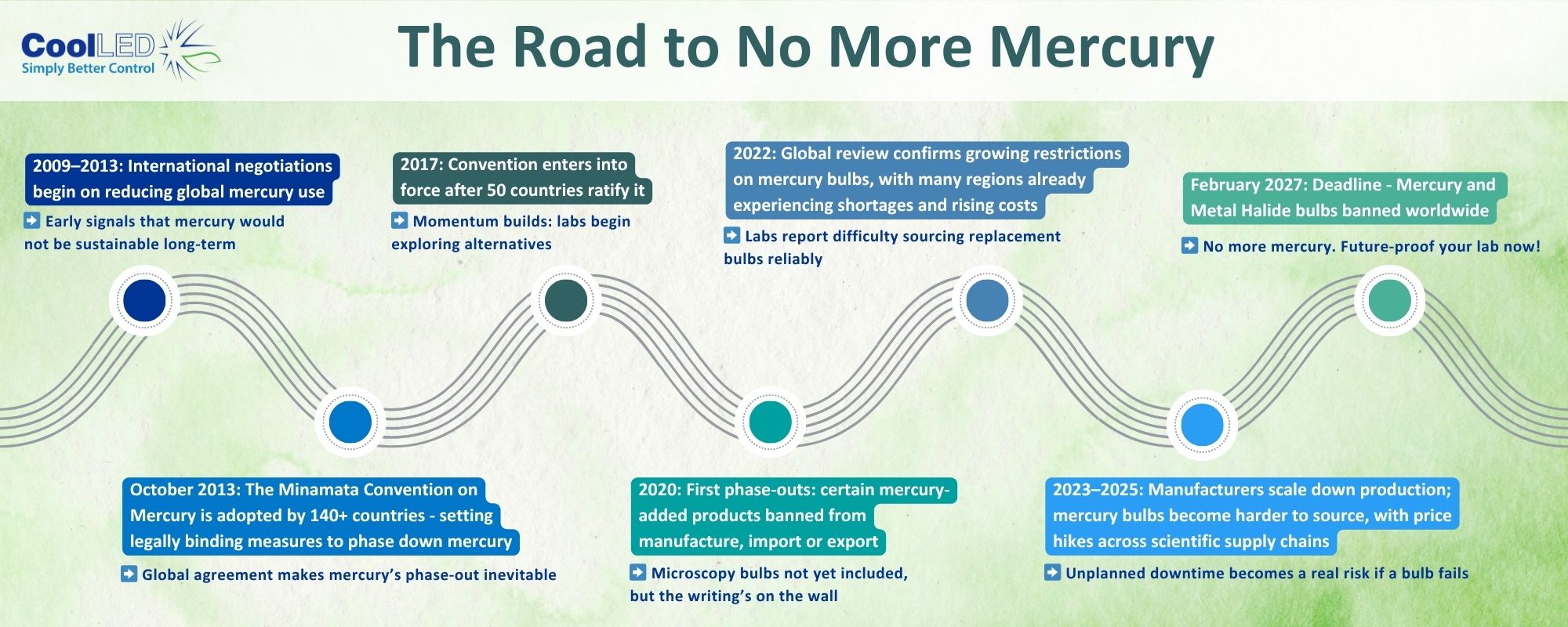Top 5 Tips for Retrofitting Your Microscope with LED Illumination
With the mercury fluorescence bulb ban coming in February 2027, there’s never been a better time to switch!
If your lab still relies on mercury or metal-halide lamps for fluorescence microscopy, the countdown is officially on.
But the good news is you don’t need to replace your entire microscope to go mercury-free.
In many cases, a simple retrofit can extend the life of your existing system and unlock the benefits of LED illumination.
Here are our top 5 tips to make the switch smooth, smart, and stress-free.
1️⃣ Check compatibility before you start
Before ordering an LED system, find out what microscope model you have (and how it’s currently configured). Many CoolLED systems are designed to fit straight onto standard epifluorescence ports, but older microscopes may need an adaptor. A quick chat with your supplier or the CoolLED team can help confirm the right fit.
2️⃣ Think wavelength coverage, not just brightness
Mercury lamps produce a broad spectrum of light but most of it goes to waste. LEDs give you specific, efficient wavelengths that match your fluorophores exactly. When choosing a system, check that the available LED channels cover the dyes you use most often, whether that’s DAPI, GFP, Cy5, or something more niche.
3️⃣ Keep control options in mind
Many LED systems can be triggered by TTL, USB, or analogue input for seamless integration with cameras and shutters. If you plan on using time-lapse imaging or automated workflows, make sure your chosen LED source can sync easily with your existing setup.
4️⃣ Budget for the long term, not just the install
The upfront cost of LEDs can look higher than replacement bulbs but remember that LEDs last tens of thousands of hours, consume far less power, and don’t need regular alignment. Once installed, they quickly pay for themselves in time, safety, and running costs.
5️⃣ Make the most of the changeover
Upgrading to LEDs is a great chance to re-evaluate your filters, objectives, and imaging workflows. You might find that the improved stability and instant on/off control open up new techniques like live-cell imaging or multiplex fluorescence. Think of it as both a replacement and an upgrade.
✨ Ready to go mercury-free?
With the 2027 ban approaching, retrofitting your microscope with LED illumination isn’t just about compliance, it’s about future-proofing your lab. From plug-and-play systems like the pE-300 Series to high-performance options such as the pE-400 Series and even the ultimate upgrade in the pE-800, we make it easy to go mercury-free without compromising your results.
🔗 Read more about the 2027 mercury fluorescence bulb ban and the ‘No More Mercury’ ban
Written by Ben Furness / [email protected] / LinkedIn Profile







